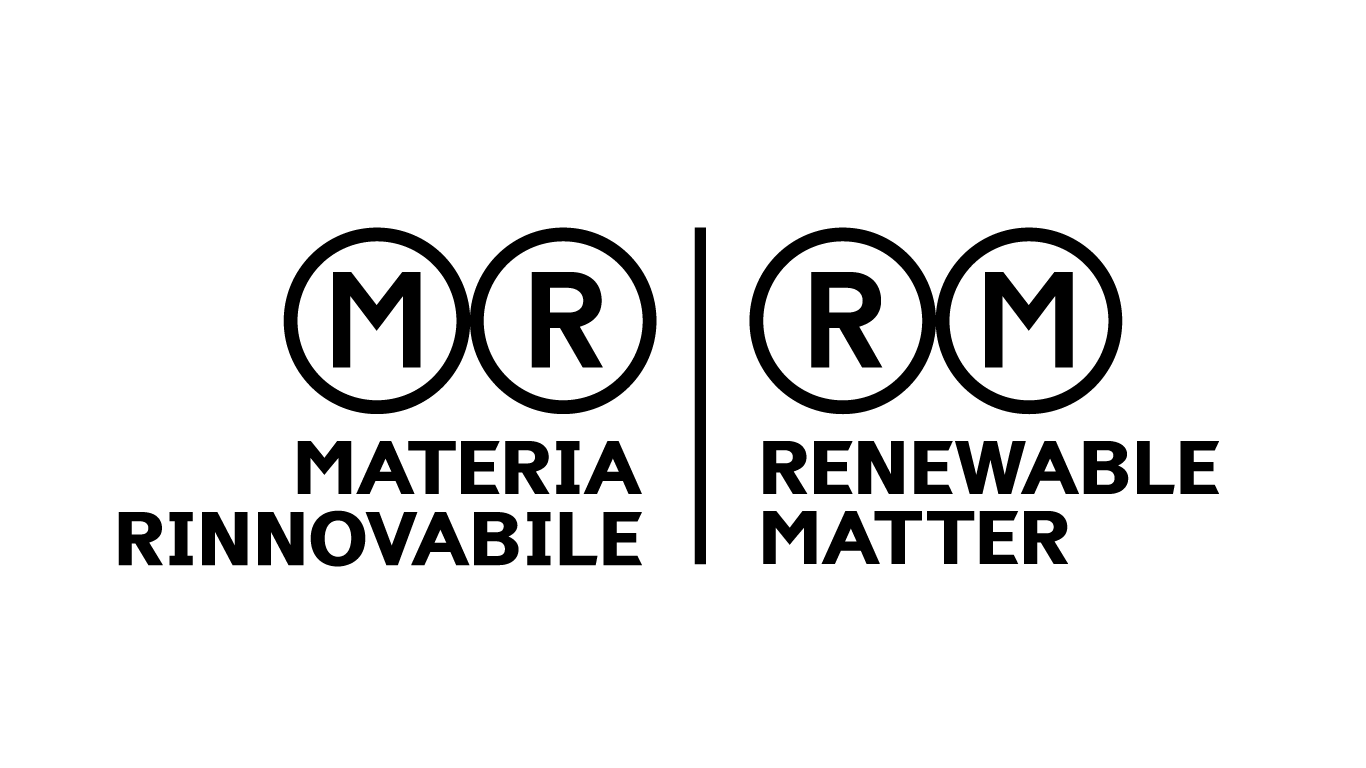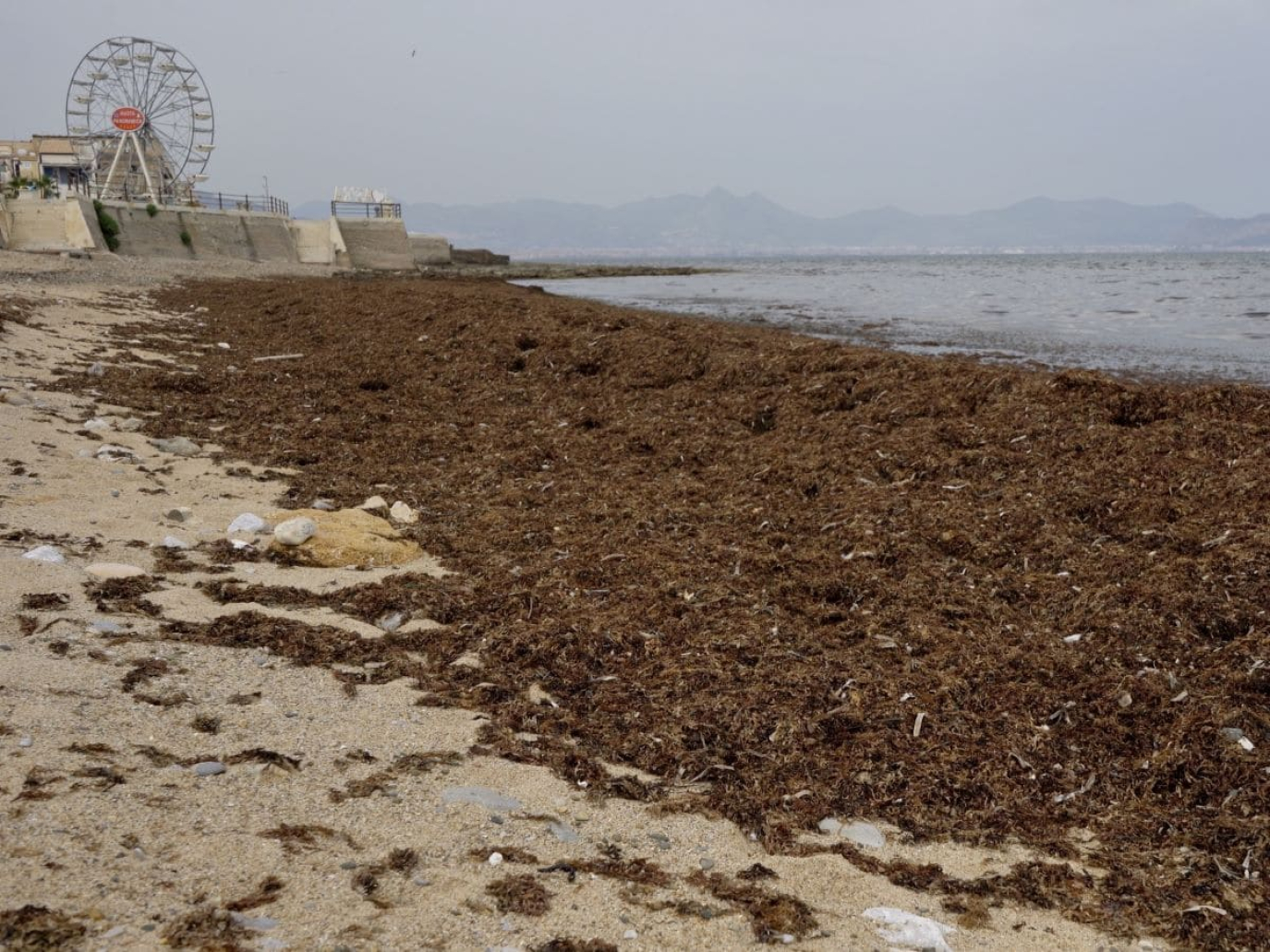
This article is also available in Italian / Questo articolo è disponibile anche in italiano
Edoardo Piretto’s weathered hands have been scraping scales off fish since he was nine, in the coastal village of Aspra, near Bagheria, about 20 kilometers from Palermo. Now 65, this Sicilian fisherman stares in frustration at his boat, filled with a foul-smelling brown mass swarming with flies. “We went out fishing today after five days off. Now I’ll have to spend at least another five days cleaning the nets,” he laments while cleaning a besugo surrounded by algae.
The culprit is Rugulopteryx okamurae, an invasive seaweed that has colonized his fishing grounds. “You have to use bleach to wash your hands. Otherwise, the smell stays for a day or two,” he says. The stench may seem trivial, but it symbolizes the seaweed’s impact on biodiversity and the local economy.
Filippo Maria Tripoli, mayor of Bagheria, the first Italian municipality to be visited by the Asian seaweed, is well aware of the issue: “This algae is a problem for the swimming and tourism season.” Every wave brings the seaweed back to the beaches and drives away beachgoers. Its removal depends on the municipal budget. “We don’t even know the right time to remove it in order to spend less money,” Tripoli explains.
A newcomer here to stay
From their office and boat, the mayor and the fisherman listen closely to the explanations of Agostino Tomasello, a botany professor at the University of Palermo and co-author of the first scientific study on the seaweed’s arrival in Italy.
Native to the Pacific, Rugulopteryx okamurae coexists peacefully with local ecosystems in Japan, China, Taiwan, Korea, and the Philippines. But in 2015, it began its invasive Mediterranean journey: it was first detected in Ceuta, a Spanish city on the African coast of the Strait of Gibraltar. Over the past ten years, it has comfortably settled along the coasts of Spain, Morocco, Portugal, and France, as well as in archipelagos like the Canary Islands, Azores, and Madeira. In 2022, it achieved another milestone: it became the first algae to be included in the EU List of Invasive Alien Species of Union Concern.
This unprecedented invasion has been facilitated by the warm Mediterranean waters, the lack of natural predators and resistance mechanisms from local species, and the ecosystem’s vulnerability due to factors like pollution from human activity or the effects of previous invasions.
In June 2023, the seaweed officially reached Piretto’s small fishing village. Two years later, Tomasello made the same journey, yet in reverse, from Sicily to Andalusia. He attended the I International Workshop on the Invasive Seaweed Rugulopteryx okamurae in Málaga, on Spain’s Mediterranean coast, at the invitation of María Altamirano, professor at the University of Málaga, who first identified the algae in Ceuta and supports its monitoring in Italy.
Ballast water: transport for invisible passengers
While solutions to the crisis are still under discussion, both Tomasello and Altamirano agree on the cause: ballast water from cargo ships traveling between Asia and Europe was the most likely route for Rugulopteryx okamurae to enter the coast of Gibraltar. Ships take on ballast water in departure ports to balance their cargo weight and discharge it in arrival ports. Ballast water transport is also the leading hypothesis behind the arrival of other iconic invasive species, such as the blue crab.
In ballast water, species don’t necessarily travel in the form we recognize, they may be microscopic: spores, propagules, eggs, or larvae. While this is a long and difficult journey for some, it’s no obstacle for Rugulopteryx okamurae, which can survive up to three weeks in the dark.
“Ships that transport materials and goods across the oceans also carry elements that can cause biological contamination,” the Italian professor explains. Although the Mediterranean Sea accounts for less than 1% of the world’s ocean area, it handles around 24% of global maritime traffic. Its direct links to the Strait of Gibraltar and the recently expanded Suez Canal explain why more than half of the nearly 1,000 exotic species found on European coasts live in its warm waters, a number that keeps rising.
Once in the Mediterranean, it’s likely that the Asian seaweed continued its journey in the same means, reaching new destinations via ballast water. But it may also have spread via marine currents or been unintentionally transported by fishing or recreational boats.
Preventing the arrival as the first step
In 2004, the International Maritime Organization (IMO) adopted a convention requiring ships to meet certain standards before discharging ballast water, though it didn’t take effect until 2017. As of September 2024, under the D2 standard of the Convention, all ships carrying ballast water sailing under a signatory country’s flag or planning to discharge in their ports must have onboard treatment systems installed.
Though it has taken 20 years and still faces implementation challenges, this measure is a step forward for protecting the Mediterranean. “I want to be optimistic and believe that, not in the near future but in the longer term, we should see a reduction in both the number of introduced species and the frequency of introduction events,” says Altamirano. “And that, obviously, should give our native ecosystems a chance to recover.”
However, Italy is lagging behind. The country has not yet ratified the IMO convention, despite the fact that stowaways in maritime transport are responsible for approximately half of the marine introductions of exotic species into its waters. Italian ships wishing to dock in ports of signatory countries, such as Spain, must comply with IMO regulations. In contrast, any international ship will be able to discharge its ballast water in Italian ports without complying with these treatment obligations.
There’s no official explanation as to why Italy hasn’t ratified the convention, but researchers like Tomasello point to economic interests. “It’s true that fishing makes up a much smaller portion of the economy than maritime transport,” he notes. “When the economic problems linked to the spread of this species become widespread, perhaps policymakers will start paying more attention and come up with concrete solutions.”
From prevention to collaboration
When it’s too late for prevention or eradication, the focus shifts to management: minimizing its spread and the costs of transporting it from beaches to municipal landfills or incinerators. This peculiar seaweed has properties that could be harnessed for cosmetic products, as insulation material in construction, for bioplastics, or even as an energy source through combustion.
At the meeting organized by Altamirano, one example was a project from the Andalusian Institute for Research and Training in Agriculture and Fisheries (IFAPA), which is exploring the use of the Asian seaweed as a biostimulant for vineyards. “In a warm climate area, where weather conditions are increasingly harsh, compounds extracted from these algae can help crops grow better and reduce plant stress,” explains Emma Cantos, the project’s lead researcher. These compounds could also help combat fungal threats that usually require toxic substances like copper.
However promising, valorization remains controversial due to the high risk of spread and the so-called “pull effect”: turning the algae into a profitable resource could reduce the urgency to stop its expansion. For now, both Spanish and European regulations ban the use and commercialization of invasive exotic species. Exceptions may be made for social or health reasons, for instance, and always as part of a species control plan.
As Rugulopteryx okamurae continues its journey across seas, scaring swimmers, frustrating fishermen, and burdening local governments, it also leaves behind an important lesson: no country can tackle this threat alone. Actors in the maritime transport chain must comply with ballast water regulations; fishermen must avoid tossing the seaweed back into the sea when cleaning their nets; governments must develop removal strategies that prevent further spread; and researchers must harness their knowledge to alert and guide all stakeholders.
“The invasion of Rugulopteryx okamurae is unprecedented. That shouldn’t discourage us, but rather inspire us to use it as a case study for how to address potential future invasions,” Altamirano concludes. “Negative scenarios are no excuse for inaction, they’re a chance to learn.”
Piretto, for his part, will not give up fishing in the waters where he grew up. Though he once only knew that the algae ruining his nets came from a faraway sea, he now assures Tomasello he’s willing to learn how to clean his nets properly to help prevent Rugulopteryx okamurae from spreading.
This article was developed with the support of Journalismfund Europe.
Cover: Aspra beach in Bagheria, near Palermo, increasingly covered in a stinking blanket of seaweed. All the photos in this article are by Irene Baños Ruiz and Juan David Escorcia



